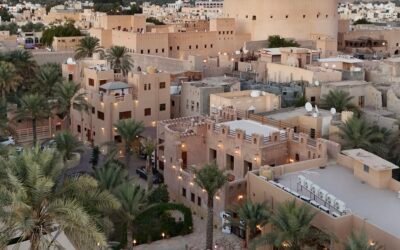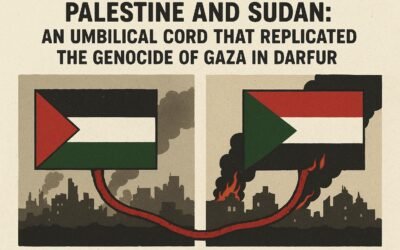The “Quadcopter” That Tracks Our Movements and Tears Our Bodies Apart
By Dr. Haya Freij – Palestinian Researcher from Gaza
Recently, quadcopters—drones with four rotors—have appeared in the Arab world for purposes such as entertainment, photography, filmmaking, and industrial or commercial use. Meanwhile, the Israeli occupation has employed them in its latest war on Gaza to assert complete control over the ground—without needing troops on site.
These drones can scout and monitor areas with full clarity, track individuals, observe their movements and relocations, and provide aerial coverage over vast militarized zones. They carry out offensive missions, launching direct fire through explosive munitions at both civilians and military targets—without distinction—contrary to international conventions.
In Gaza, many civilians were killed as soon as they approached restricted zones occupied by Israeli military vehicles—while trying to reach their homes, shops, farmland, or while fleeing from one area to another. These deadly machines did not spare those sheltering in their homes within suddenly raided military zones. Many were unable or chose not to flee, believing they were safe and that the army would not harm peaceful civilians in their homes.
This has made the quadcopter one of Israel’s most significant tools of military superiority. It has helped neutralize entire areas—cutting them off, just as it did along the border areas with Gaza since October 7, and in its repeated incursions into northern and southern Gaza. It has also prevented residents from reaching Rafah for over a year, and besieged Jabalia Refugee Camp, sealing its entrances and exits. Attempting to escape became a path toward death—one taken willingly.
Eyewitness Accounts from Jabalia
For the surviving residents spared by fate, all they have left is to recount their stories—written in blood and tears. We experienced the quadcopter during the siege of Jabalia Camp. Shells and missiles rained down upon us while the army stormed the camp with soldiers and tanks, backed by heavy aerial coverage. The drones enforced a curfew. We couldn’t move until our neighbor screamed for help, calling on my brothers to rescue him after he was shot in the leg with live ammunition. He informed us that Israeli troops were searching houses and arresting men, youths, and women, and urged us to flee before we too were detained.
Another neighbor tried to check on the situation but was immediately shot and killed by a drone. His neighbor attempted to retrieve the body and was also killed on the spot. No one could retrieve their bodies until days later, after Israeli forces withdrew. They were buried together in a mass grave.
This happened in the early days after the fragile truce of early 2024, during which prisoner exchanges were conducted. At that time, the occupation claimed that the camp was an active battlefield and ordered us to evacuate to Gaza City. They gave us an evacuation map that led us to take Unity Street toward the designated shelters in Al-Rimal district.
Peril on the Road to Safety
Due to the scarcity of transport, we walked more than half the way until we found a donkey to carry our belongings. My mother and grandmother reached Al-Rimal before us. On our way, however, the quadcopter suddenly targeted us with live bullets—aiming at our legs and under our feet. We sought cover by the walls of the bombed Saraya Mosque.
We and the rest of the displaced tried to cross the main street, but heavy gunfire awaited us. Wounded bodies fell before our eyes, and we had to choose between crossing the street of death or returning to Sheikh Radwan neighborhood, which was another battlefield.
While my brothers and neighbors fetched water, the cursed drone opened fire on the crowd filling containers with non-potable water. I can still taste the salt in my mouth, even after more than a year and a half. We had no choice but to drink it—so we wouldn’t die of thirst in this land of death, despair, and oppression.
Night Watchers and No Rest
Sleep became a luxury out of reach. By nightfall, the darkness felt heavy. How long is the night for one who cannot sleep? And how does one sleep when fate hangs between sky and earth—hurled by tanks, jets, and warships without mercy?
Our house had no windows—shattered by repeated shelling. Light cloth covered the openings, failing to block the January chill or the drone’s prying eyes. The quadcopter would hover, turn on its lights, and count us one by one, observing through the broken door, scanning the house. We laid our mats in the living room and whispered through the night, terrified and frozen.
When the Machine Replaces the Soldier
During the last invasion of the camp before the most recent truce, tanks stationed in Al-Faluja—Gaza’s main southern and western gateway. A neighbor who encouraged others to stay eventually left to clear the path for his frightened children. The quadcopter shot him immediately. A tank later crushed his body. The gunfire lasted for hours. When the tanks retreated slightly, my brother retrieved the neighbor’s body, reciting a verse from the Qur’an. The man was already dead.
Moments before our house was hit, we saw the quadcopter stop at our door. They knew we were there, and they knew we posed no threat. But our presence interfered with their displacement agenda.
Beyond Firepower: A Call for Justice
With such aerial surveillance and precision targeting, civilian movement is severely limited—contradicting media narratives of fierce resistance. Primitive means cannot counter modern technology. Thus, calls for disarmament to stop the war become a form of evasion—used to justify continued conflict.
How can bare hands confront sky-borne missiles? How can unarmed civilians resist falling fireballs and incoming rockets?
They cannot.
All they can do is wait—for justice to prevail, and for the truth to finally put an end to the bloodshed.
Hassan Al Maqbali
Content Creator & Website Manager at Omanspire
Hassan Al Maqbali is a dedicated content creator and the website manager at Omanspire, where he writes passionately about Oman's culture, history, and the timeless stories that shape the nation’s identity. His work reflects a deep love for the Sultanate and a commitment to sharing its beauty with the world.
Driven by a desire to widen global understanding of Oman, Hassan creates narratives that present the country through diverse perspectives—capturing its people, heritage, landscapes, and evolving cultural heartbeat. Through Omanspire, he hopes to bring readers closer to the spirit of Oman, one story at a time.




